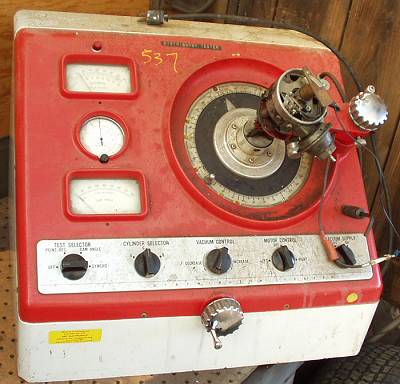Somewhere I thought I read that you could test the distributor advance by attaching some vacuum hose and sucking on the advance side and checking for movement (in the proper direction of course). I venture to say that Heide Fleiss -or Charlie Sheen for that matter- could not have budged my distributor using that method. I tried pushing the arm forward and it was very difficult. Is this indicative of a non functioning advance or when that thing starts spinning at 1-2K RPM's will the centrifugal force move it and overcome the resistance?
thanks-sorry
thanks-sorry







